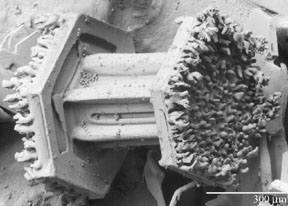Last month, I wrote an entry about the various definitions of limbo (the theological place and the dance). In response, one intrepid reader wanted to know what is the difference between limbo and purgatory. Good question, said I, and hunted for an answer.

Dante's version of purgatory, as illustrated by Gustav Dorè
(Image from Dr. Widger's Library, available through Project Gutenberg)
People use "purgatory" and "limbo" pretty much interchangeably, so it took a while before I found anything that said that there actually is a difference. And I discovered I had described limbo in my previous entry as being both limbo and purgatory, when in fact they are two different places where two different things happen (I have since corrected my error).
Only the truly perfect souls get to go straight to heaven. Purgatory is the unplottable place that is neither heaven nor hell, but someplace in between, where the less-than-perfect souls are sent to purge themselves of their sins before they're allowed to move on to heaven.
Limbo is similarly neither heaven nor hell. However, those souls banished to limbo can never get out of it. Babies who had never been baptized and Jewish, Old Testament heroes are the primary residents of limbo (although some say that after Christ died on the cross, he went down and got all those Old Testament souls out of hell and sent them on up to heaven).
Limbo came about as a way to circumnavigate Thomas Aquinas' strict assertion that if you'd never been baptized, you were going to hell and that was that. Limbo was a way of saying, "That baby doesn't really have to go to hell, does she? Maybe she can go to this other place that's not quite so bad."
Centuries later, the Catholic church now seems to be on the verge of getting rid of the concept of limbo. It no longer appears in the Catholic catechism, and Pope Benedict XVI has asked the International Theological Commission to decide whether it exists or not.
The fact that the Catholic church might be banishing limbo seems to be coming less from a return to strict damnation and more from a growing leniency. Maybe those babies not only don't get sent to hell, they don't even get stuck in limbo anymore but actually do get to go to heaven.
Graupel
This same intrepid reader also e-mailed me that she had read that Malibu was recently "blanketed with irregularly shaped hailstones called graupel." What, my reader wanted to know, is graupel?

Graupel that climber Steve Eckert encountered on his journey to the top of Lone Pine Peak, California, and back.
(Photo by Steve Eckert at Climber.org)
Graupel forms as the snow whirls around up in the cloud. It starts out as a snow crystal, the very filamenty sorts of things that we often represent by cutting shapes out of paper. As the crystal flies around up in the cloud, it encounters droplets of supercooled water. These droplets latch onto the crystal and freeze to it. The resulting ice that forms around the droplet and the crystal is kind of opaque and milky; this type of ice is called rime. If you think about what hailstones look like -- sort of like eyes with cataracts all the way around -- that's what rime looks like.
Okay, so we've got snow crystals with supercooled droplets fused to them. These things usually freeze together in some logical shape, surprisingly enough. They make branching crystals, or needle-like shapes, or one of these clusters actually looks sort of like a double-ended bolt.

Snow crystal, becoming a graupel
(Photo from Beltsville USDA ARC)
But this crystal-droplet cluster is still whirling around, still attracting more droplets. Eventually, so many droplets freeze to the crystal, there's no more recognizable shape. And the thing has become a graupel.
Another factor here is that, even though this crystal has accumulated a lot of droplets, the graupel is still very small. Graupel is very like hail and is often called "soft hail". But for a snow pellet to qualify as hail, it has to have a diameter of at least 5 mm. So graupel is smaller, and therefore less ping-y than true hail.
Skiers and people who study avalanches recognize graupel as Styrofoam ball-shaped snow pellets. They tend to roll around a lot and are therefore very unstable in a big mound of snow.
So the lesson of this Apple seems to be, don't get caught in a graupel avalanche, or you may find yourself in purgatory. Right.
Sources
Paul Collins, "Lose limbo but salvage purgatory," The Sydney Morning Herald, December 1, 2005
Lutheran Church Missouri Synod, "Limbo - What is it?"
Online Etymology Dictionary, purgatory
1911 Encyclopedia Britannica online version, Purgatory
Daily Apple, Limbo
American Meteorological Society, Glossary of Meteorology, Graupel
Beltsville branch of the USDA Agricultural Research Center, Rime and Graupel
Avalanche.org, Avalanche Encyclopedia, Graupel
Climber.org, Lone Pine Peak trip report
Beautiful Apple Lady:
ReplyDeleteThank you.
hmmm...there is alot of misconception about what the limbo and what purgatory means...and that's making religious critics decieve unbelievers...i won't mention names here but that's the truth...
ReplyDelete